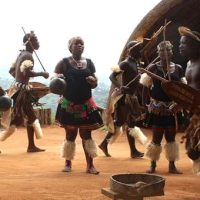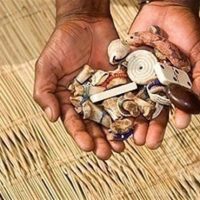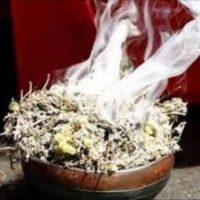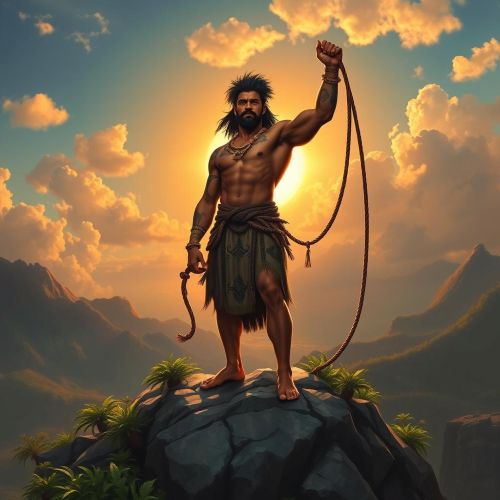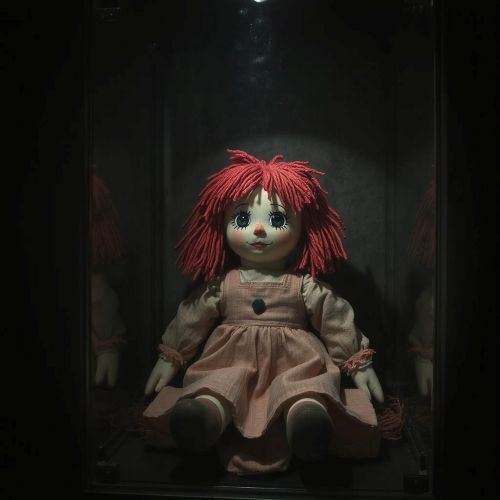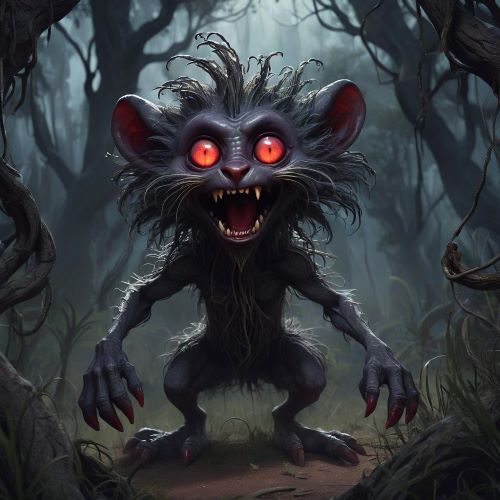Amadlozi : The Ancestral Spirits
Listen
At a glance
| Description | |
|---|---|
| Origin | Southern African Mythology |
| Classification | Spirits |
| Family Members | N/A |
| Region | South African, Zimbabwe, Malawi, Zambia, Swaziland |
| Associated With | Protection, Healing, Most life activities |
Amadlozi
Introduction
Amadlozi, originating from the Zulu language, denotes revered spiritual beings believed to provide protection and guidance. These entities occupy a significant role in the mythology of the Nguni people, a prominent ethnic group in Southern Africa. The concept of Amadlozi underscores fundamental beliefs and practices concerning life, death, fortune, and misfortune among the Nguni communities.
Among the pantheon of spiritual beings, the Amadlozi emerge as enigmatic guardians esteemed by diverse indigenous groups throughout the region. They occupy a unique position, serving as intermediaries between the realms of the living and the dead, assuming roles as guardians, advisors, and occasionally, tricksters. “Amadlozi,” translating to “spirits” or “shades” in Zulu and Xhosa, symbolize the departed ancestors who maintain a watchful presence over their descendants.
Far from being mere ethereal entities, Amadlozi are believed to possess discernible forms, often appearing akin to their earthly selves albeit with an ethereal glow or an incorporeal aspect hinting at their supernatural essence. In various traditions, they may manifest as orbs of light or even take on the guise of animals, reflecting their deep connection to the natural world.
Physical Traits
The physical attributes of Amadlozi remain elusive, given their status as spiritual entities. However, their presence exerts a profound influence within Nguni culture, where they are believed to be governed by superior spiritual beings known as iThonga, custodians of umsamo, the physical and spiritual heart of the Nguni people. Despite the lack of explicit descriptions, certain commonalities emerge in depictions of Amadlozi across various regions and cultures.
They are often portrayed as aged versions of their earthly selves, retaining the physical markers acquired in life. Wrinkles deepen, stooped postures become more pronounced, and traces of scars and injuries may linger. Yet, amidst these signs of mortal existence, Amadlozi are said to exude an aura of serenity and wisdom, their eyes reflecting the knowledge amassed throughout their earthly journey.
Manifesting in diverse forms, they may appear as ethereal figures veiled in mist or bathed in the radiant glow of celestial light. Some accounts describe them as towering beings with luminous eyes, while others depict them as ephemeral entities devoid of distinct form, drifting between realms like wisps of smoke.
Family
Amadlozi are revered as the departed kin of individuals, residing in the spirit realm. Acting as intermediaries between the mortal world and the domain of spirits, they collaborate closely with uMvelinqangi, the supreme being, in Nguni belief systems. Central to the ethos of the Nguni people is the notion that maintaining a robust connection with one’s ancestors is indispensable for leading a harmonious existence.
Understanding the intricacies of the ancestral lineage is pivotal in grasping the significance of Amadlozi. Within this expansive familial structure, senior ancestors, known as amathongo, hold positions of authority. While the specific roles and dynamics within the ancestral family may vary across cultural contexts, the fundamental concept endures: the living and the departed are bound together in a continuum transcending the material realm.
Other names
Amadlozi, while commonly recognized by this name, are also referred to by various other titles depending on their nature and the roles they fulfill. For instance, within the lineage of a Sangoma, the ancestral royal lineage is denoted as Amakhosi. An ancestral spirit possessing the gift of healing, who passes it down to their descendants, is known as Idlozi.
The term “Amadlozi” is just one among many used to describe these ancestral spirits. Across different regions of Southern Africa, they are known by a plethora of names, each carrying its own subtle nuances. Among the Xhosa, they are referred to as aBadimo, while the Sotho community identifies them as Badimo, and the Shona people use the term Vadzimu.
Powers and Abilities
Amadlozi are revered for their ability to steer their people towards lives of purpose and virtue. They are regarded as guardians who can be invoked for aid and safeguarding. Communication with the living often occurs through dreams, with their presence sometimes indicated by illness or the appearance of serpents in homesteads.
Considered as bestowers of blessings, fortune, and guidance, Amadlozi are believed to wield an array of supernatural powers. Through dreams, visions, and tangible signs, they maintain contact with their descendants. They exert influence over familial destinies, rewarding virtuous deeds and administering consequences for transgressions. As protectors, they shield their kin from harm and adversity, and in certain instances, they are credited with the capacity to shape the trajectory of their family’s fortunes.
Modern Day Influence
Even amidst the widespread embrace of Christianity, the influence of Amadlozi endures in contemporary times, particularly among Zulu-speaking South Africans. Revered as formidable spiritual forces, Amadlozi persist as a significant aspect of cultural consciousness, their presence interwoven with the Christian faith. This fusion has given rise to African churches such as the ZCC, Shembe, and Amazayoni, where traditional beliefs coalesce with Christian doctrine.
Traditional rituals and ceremonies honoring the ancestors persist, underscoring the ongoing reverence for Amadlozi. Many individuals continue to seek guidance and solace from their ancestral spirits through the intermediary role of traditional healers and diviners. Far from being relegated to the realms of folklore, Amadlozi are perceived as living entities deeply entrenched in the fabric of Southern African life.
They serve as potent conduits bridging the temporal chasm between past and present, serving as custodians of heritage and advocates for familial and communal harmony. As long as narratives endure, rituals persist, and veneration for ancestors remains steadfast, the vigilance of Amadlozi over their descendants persists, offering invaluable guidance, protection, and a profound sense of belonging.
Related Images
Frequently Asked Questions
What is lorem Ipsum?
I am text block. Click edit button to change this text. Lorem ipsum dolor sit amet, consectetur adipiscing elit. Ut elit tellus, luctus nec ullamcorper mattis, pulvinar dapibus leo.
What is lorem Ipsum?
I am text block. Click edit button to change this text. Lorem ipsum dolor sit amet, consectetur adipiscing elit. Ut elit tellus, luctus nec ullamcorper mattis, pulvinar dapibus leo.
What is lorem Ipsum?
I am text block. Click edit button to change this text. Lorem ipsum dolor sit amet, consectetur adipiscing elit. Ut elit tellus, luctus nec ullamcorper mattis, pulvinar dapibus leo.
What is lorem Ipsum?
I am text block. Click edit button to change this text. Lorem ipsum dolor sit amet, consectetur adipiscing elit. Ut elit tellus, luctus nec ullamcorper mattis, pulvinar dapibus leo.
What is lorem Ipsum?
I am text block. Click edit button to change this text. Lorem ipsum dolor sit amet, consectetur adipiscing elit. Ut elit tellus, luctus nec ullamcorper mattis, pulvinar dapibus leo.

